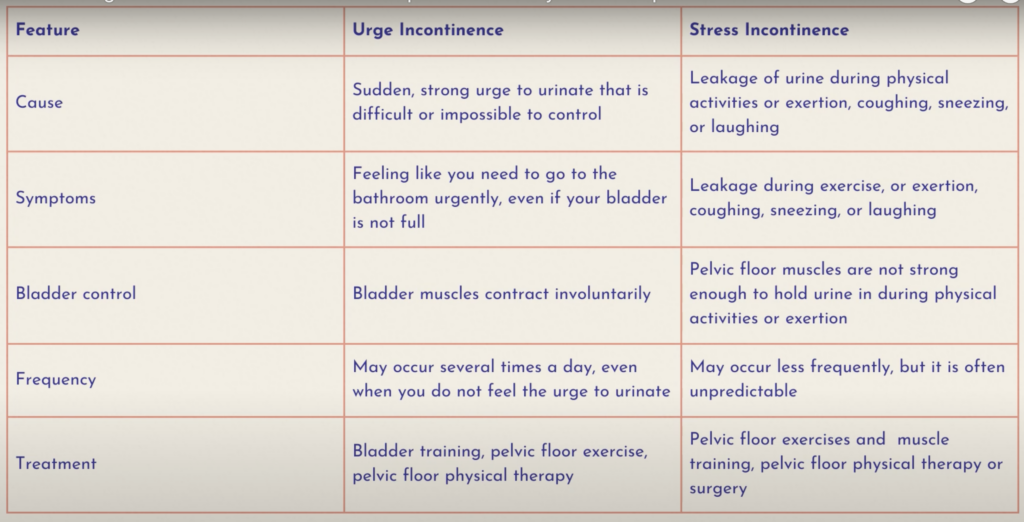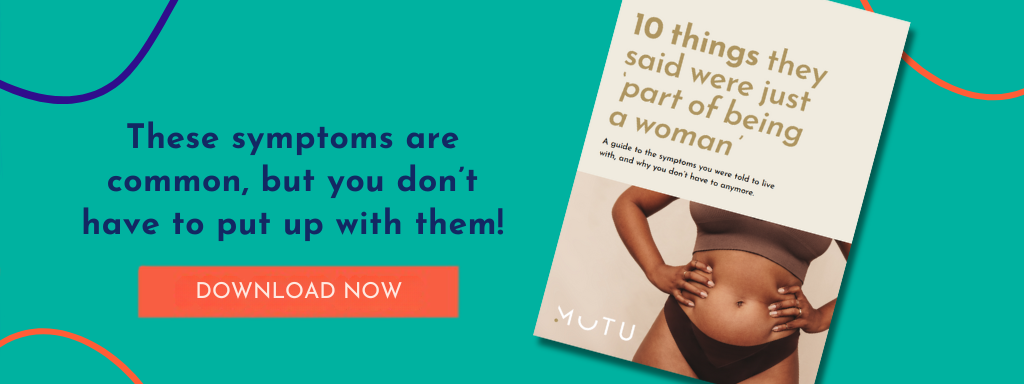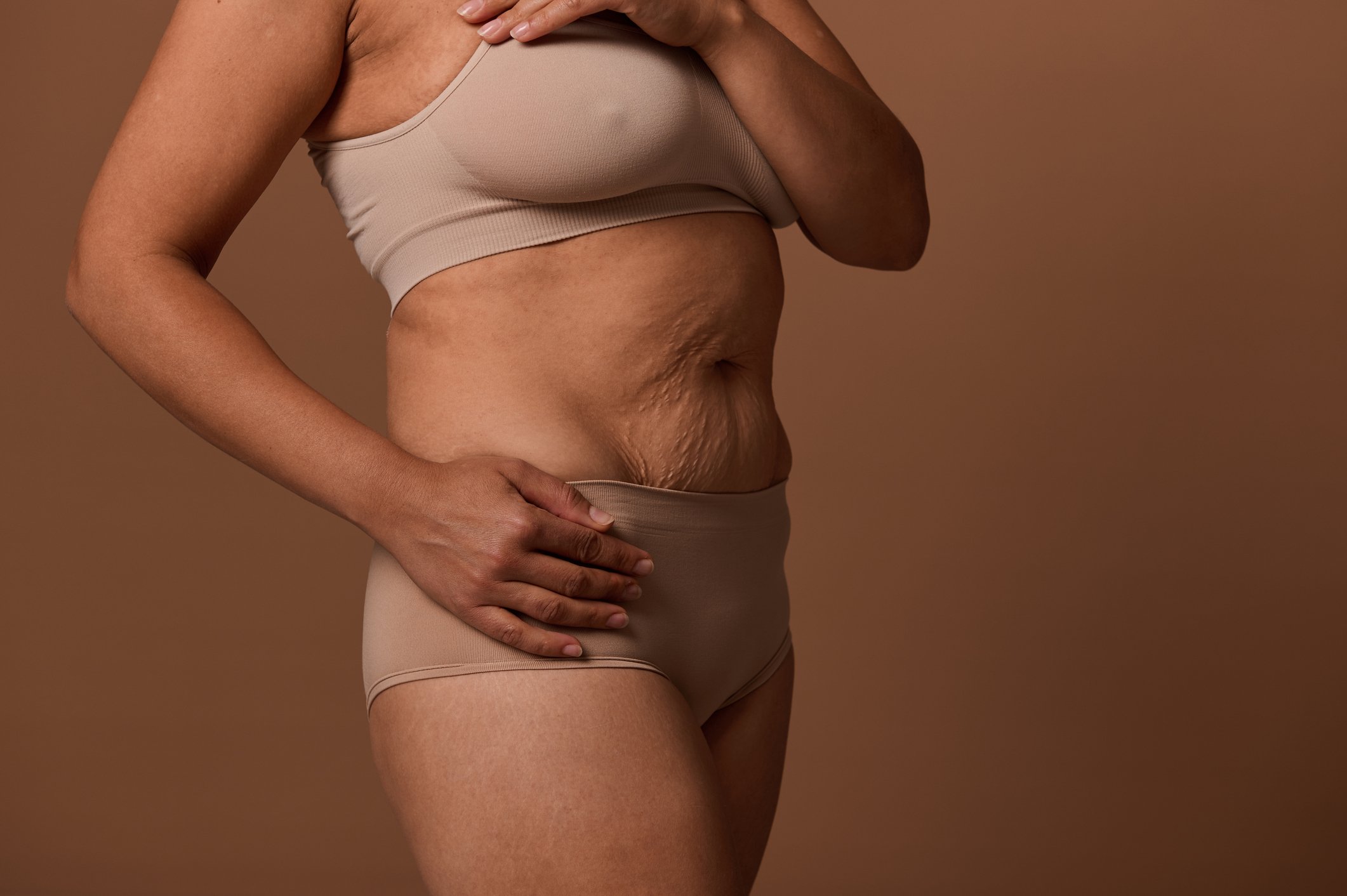After you give birth, you might leak pee. I’m here to tell you that you can fix this, and one way to understand why bladder leaks are happening is to understand the two main types of incontinence and what causes them.
So in this article we will walk through the difference between stress incontinence and urge incontinence to get a better understanding of what is happening down there and what to do about it.
Urge incontinence is more common in women than stress incontinence, but stress incontinence is more common in women who have had children.
Urge Incontinence: A Sudden and Pressing Need to Pee
Let’s start with urge incontinence, which is a sudden and pressing need to pee which leads to involuntary leaks. This is caused by the bladder contracting when it shouldn’t. So urine leaks through the muscles that hold your bladder closed.
Normally, you are in control of your bladder muscles, so you choose when you open them up to pee. But in urge incontinence, the muscles in your bladder walls start squeezing or contracting on their own, which tells your brain to release the pee in your bladder – even though the bladder is not full!
So because urge incontinence can happen even when your bladder is not full, you can leak without even noticing. This is why it’s helpful to wear an incontinence pad to catch these leaks just in case they happen. Period pads are just not good enough to catch leaks, as they’re built differently and I’ve made a video that explains why incontinence pads are definitely what you need to use to be more comfortable and more confident!
Strengthen Your Pelvic Muscles to Avoid Urge Incontinence
To avoid urge incontinence, you want to strengthen your pelvic muscles with 12-minute daily exercises, like those you can find in MUTU.

You might find it helpful to start a bladder diary where you keep track of how often you get these bladder leaks.
And you should avoid going to the loo “just in case” and try to make sure you empty your bladder fully every time you go to the toilet.
Stress Incontinence: A Sudden Pressure on The Bladder
Let’s move on to stress incontinence. This is when you have a sudden pressure or strain on the bladder and your pelvic floor muscles, and you feel like you can’t stop yourself from peeing – you just can’t hold it in!
Stress incontinence is more likely to happen when you’re exercising, coughing, sneezing or laughing. And unlike urge incontinence, where your bladder muscles are to blame, stress incontinence is caused by weak or damaged pelvic floor muscles.
When the pelvic floor muscles are not strong enough, they cannot prevent pee from leaking out during activities, like exercising, that put pressure on the bladder.
So if you’ve just had a baby, or your babies are not babies anymore, and you’re having bladder leaks, it might be that childbirth has weakened the pelvic floor muscles.
This is why, for stress incontinence, you want to strengthen your pelvic floor muscles to support the bladder and other organs down there like your womb and your bowels. It’s a good idea to strengthen your pelvic floor muscles to prevent pelvic prolapse too.
You also want to drink enough water and eat well. And try to pee only when your bladder is full.
Summary Table of Urge Incontinence vs Stress Incontinence

What Else Can You Do to Treat Postpartum Incontinence?
So what else is available for stress incontinence or urge incontinence? As well as strengthening your pelvic floor muscles, some lifestyle modifications can help with stress incontinence. Try reducing your intake of caffeine and fizzy drinks. Weight loss is also recommended if obesity is a factor for you.
Bladder training is a behaviour therapy for urge incontinence that aims to increase the amount of time between bladder emptying. It also aims to increase the amount of fluid your bladder can hold. Keeping a diary of your bladder activity is important so you can work with your physical therapist or care provider to establish new routines and habits.

Surgical Options
MUTU Medical Ambassador Dr Jai Seth recommends discussing surgical options with a specialist where symptoms have not responded to physical therapy and pelvic floor exercises.
For urge incontinence, this may include medication, nerve stimulation or botox therapy.
For stress incontinence, bulking injections or corrective surgery may be an option for you. Please discuss this with a specialist.
If you enjoyed this article and video, check out or 8 ways to handle bladder leaks.












